Teka CI 342 User Manual [en, de, es, fr]
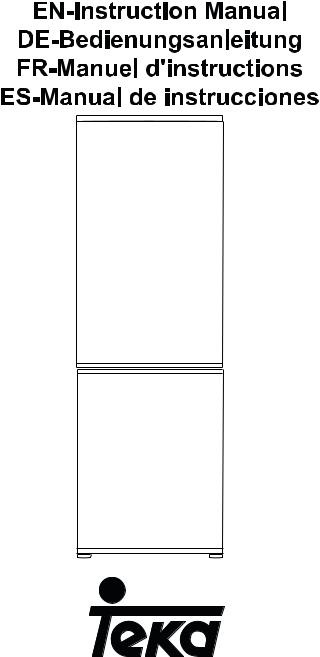
CI 320 CI 342
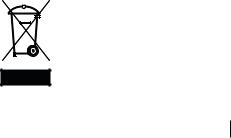
Please read this manual first!
Dear Customer,
We hope that your product, which has been produced in modern plants and checked under the most meticulous quality control procedures, will provide you an effective service.
For this, we recommend you to carefully read the entire manual of your product before using it and keep it at hand for future references.
This manual
•Will help you use your appliance in a fast and safe way.
•Read the manual before installing and operating your product.
•Follow the instructions, especially those for safety.
•Keep the manual in an easily accessible place as you may need it later.
•Besides, read also the other documents provided with your product.
Please note that this manual may be valid for other models as well.
Symbols and their descriptions
This instruction manual contains the following symbols:
C Important information or useful usage tips.
AWarning against dangerous conditions for life and property.
BWarning against electric voltage.
This product is supplied with the selective sorting symbol for waste electrical Recycling and electronic equipment (WEEE).
This means that this product must be handled pursuant to European Directive
2002/96/EC in order to be recycled or dismantled to minimise its impact on the environment. For further information, please contact your local or regional authorities.
Electronic products not included in the selective sorting process are potentially dangerous for the environment and human health due to the presence of hazardous substances.
1 EN

CONTENTS
1 Your refrigerator |
3 4 Preparation |
12 |
||
|
|
|
|
|
2 Important Safety Warnings4 |
|
Intended use...................................... |
4 |
For products with a water dispenser;.6 |
|
Child safety........................................ |
6 |
HCA Warning..................................... |
6 |
Things to be done for energy saving... |
7 |
3 Installation |
8 |
Points to be considered when re- |
|
transporting your refrigerator.............. |
8 |
Before operating your refrigerator....... |
8 |
Electric connection............................. |
8 |
Disposing of the packaging................ |
9 |
Disposing of your old refrigerator........ |
9 |
Placing and Installation....................... |
9 |
Replacing the interior light bulb ....... |
10 |
Reversing the doors......................... |
11 |
5 Using your refrigerator 13
Control Panel .................................. |
13 |
Defrost............................................. |
15 |
Zero temperature compartment........ |
16 |
6 Maintenance and |
|
cleaning |
17 |
Protection of plastic surfaces .......... |
17 |
7 Recommended solutions |
|
for the problems |
18 |
2 EN

1 Your refrigerator
1 |
|
2 |
|
|
14 |
3 |
|
4 |
16 |
|
|
|
15 |
5 |
|
6 |
|
|
15 |
5 |
|
18 |
|
5 |
|
7 |
|
8 |
|
9 |
17 |
|
|
10 |
|
11 |
|
12 |
|
19 |
|
12 |
|
12 |
|
13 |
|
1. |
Plastic top cover |
10.0 °C Compartment |
|
2. |
Control panel |
11.Ice bank |
|
3. |
On / Off switch |
12.Freezer compartment |
|
4. |
Interior light |
13.Air grille |
|
5. |
Movable shelves |
14.Dairy compartment |
|
6. |
Wine rack |
15.Adjustable door shelves |
|
7. |
Defrost water collection channel - Drain |
16.Egg tray |
|
8. |
tube |
17.Bottle shelf |
|
Plastic back cover |
18.Fridge compartment |
||
9. |
Crisper cover |
||
19.Freezer compartment |
|||
|
|
C Figures that take place in this instruction manual are schematic and may not correspond exactly with your product. If the subject parts are not included in the product you have purchased, then it is valid for other models.
3 EN

2 Important Safety Warnings
Please review the following information. Failure to observe this information may cause injuries or material damage. Otherwise, all warranty and reliability commitments will become invalid.
The usage life of the unit you purchased is 10 years. This is the period for keeping the spare parts required for the unit to operate as described.
Intended use
This product is intended to be used
–indoors and in closed areas such as homes;
–in closed working environments such as stores and offices;
–in closed accommodation areas such as farm houses, hotels, pensions.
•This product should not be used outdoors.
General safety
•When you want to dispose/scrap the product, we recommend you to
consult the authorized service in order to learn the required information and authorized bodies.
•Consult your authorized service for all your questions and problems related to the refrigerator. Do not intervene or let someone intervene to the refrigerator without notifying the authorised services.
•For products with a freezer compartment; Do not eat cone ice cream and ice cubes immediately after you take them out of the freezer compartment! (This may cause frostbite in your mouth.)
•For products with a freezer compartment; Do not put bottled and canned liquid beverages in the freezer compartment. Otherwise, these may burst.
•Do not touch frozen food by hand; they may stick to your hand.
•Unplug your refrigerator before cleaning or defrosting.
•Vapor and vaporized cleaning materials should never be used in cleaning and defrosting processes of your refrigerator. In such cases, the vapor may get in contact with the electrical parts and cause short circuit or electric shock.
•Never use the parts on your refrigerator such as the door as a means of support or step.
•Do not use electrical devices inside the refrigerator.
•Do not damage the parts, where the refrigerant is circulating, with
drilling or cutting tools. The refrigerant that might blow out when the gas channels of the evaporator, pipe extensions or surface coatings are punctured causes skin irritations and eye injuries.
•Do not cover or block the ventilation holes on your refrigerator with any material.
•Electrical devices must be repaired by only authorised persons. Repairs performed by incompetent persons create a risk for the user.
•In case of any failure or during a maintenance or repair work,
disconnect your refrigerator’s mains
4 EN
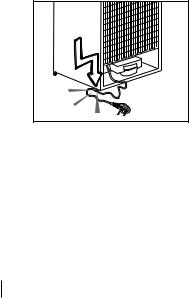
supply by either turning off the relevant fuse or unplugging your appliance.
•Do not pull by the cable when pulling off the plug.
•Place the beverage with higher proofs tightly closed and vertically.
•Never store spray cans containing flammable and explosive substances in the refrigerator.
•Do not use mechanical devices or other means to accelerate the
defrosting process, other than those recommended by the manufacturer.
•This product is not intended to be used by persons with physical, sensory or mental disorders or unlearned or inexperienced people (including children) unless they are attended by a person who will be responsible for their safety or who will instruct them accordingly for use of the product
•Do not operate a damaged refrigerator. Consult with the service agent if you have any concerns.
•Electrical safety of your refrigerator shall be guaranteed only if the earth system in your house complies with standards.
•Exposing the product to rain, snow, sun and wind is dangerous with respect to electrical safety.
•Contact authorized service when there is a power cable damage to avoid danger.
•Never plug the refrigerator into the wall outlet during installation. Otherwise, risk of death or serious injury may arise.
•This refrigerator is intended for only storing food items. It must not be used for any other purpose.
•Label of technical specifications is located on the left wall inside the refrigerator.
•Never connect your refrigerator to electricity-saving systems; they may damage the refrigerator.
•If there is a blue light on the refrigerator, do not look at the blue light with optical tools.
•For manually controlled refrigerators, wait for at least 5 minutes to start the refrigerator after power failure.
•This operation manual should be handed in to the new owner of the product when it is given to others.
•Avoid causing damage on power cable when transporting the refrigerator. Bending cable may cause fire. Never place heavy objects on power cable. Do not touch the plug with wet hands when plugging the product.
•Do not plug the refrigerator if the wall outlet is loose.
•Water should not be sprayed directly on inner or outer parts of the product for safety purposes.
•Do not spray substances containing inflammable gases such as propane gas near the refrigerator to avoid fire and explosion risk.
5 EN

•Never place containers filled with water on top of the refrigerator, otherwise this may cause electric shock or fire.
•Do not overload your refrigerator with excessive amounts of food. If overloaded, the food items may fall down and hurt you and damage refrigerator when you open the door.
Never place objects on top of the refrigerator; otherwise, these objects may fall down when you open or close the refrigerator's door.
•As they require a precise temperature, vaccines, heat-sensitive medicine and scientific materials and etc. should not be kept in the refrigerator.
•If not to be used for a long time, refrigerator should be unplugged. A possible problem in power cable may cause fire.
•The plug's tip should be regularly cleaned; otherwise, it may cause fire.
•The plug’s tip should be cleaned regularly with a dry cloth; otherwise, it may cause fire.
•Refrigerator may move if adjustable legs are not properly secured on the floor. Properly securing adjustable legs on the floor can prevent the refrigerator to move.
•When carrying the refrigerator, do not hold it from door handle. Otherwise, it may be snapped.
•When you have to place your product next to another refrigerator or freezer, the distance between devices should be at least 8cm. Otherwise, adjacent side walls may be humidified.
For products with a water dispenser;
Pressure of water mains should be minimum 1 bar. Pressure of water mains should be maximum 8 bars.
• Use only potable water.
Child safety
•If the door has a lock, the key should be kept away from reach of children.
•Children must be supervised to prevent them from tampering with the product.
HCA Warning
If your product's cooling system contains R600a:
This gas is flammable. Therefore, pay attention to not damaging the cooling system and piping during usage and transportation. In the event of damage, keep your product away from potential fire sources that can cause the product catch a fire and ventilate the room in which the unit is placed.
Ignore this warning if your product's cooling system contains R134a.
Type of gas used in the product is stated in the type plate which is on the left wall inside the refrigerator.
Never throw the product in fire for disposal.
6 EN

Things to be done for energy saving
•Do not leave the doors of your refrigerator open for a long time.
•Do not put hot food or drinks in your refrigerator.
•Do not overload your refrigerator so that the air circulation inside of it is not prevented.
•Do not install your refrigerator under direct sunlight or near heat emitting appliances such as ovens, dishwashers or radiators.
•Pay attention to keep your food in closed containers.
•For products with a freezer compartment; You can store maximum amount of food items in the freezer when you remove the shelf or drawer of the freezer. Energy consumption value stated for your refrigerator has been determined
by removing freezer shelf or drawer and under maximum load. There is no harm to use a shelf or drawer
according to the shapes and size of food to be frozen.
•Thawing frozen food in fridge compartment will both provide energy saving and preserve the food quality.
7 EN

3 Installation
BPlease remember that the manufacturer shall not be held liable if the information given in the instruction manual is not observed.
Points to be considered when re-transporting your refrigerator
1.Your refrigerator must be emptied and cleaned prior to any transportation.
2.Shelves, accessories, crisper and etc. in your refrigerator must be fastened securely by adhesive tape against any jolt before repackaging.
3.Packaging must be tied with thick tapes and strong ropes and the rules of transportation printed on the package must be followed.
Please do not forget… Every recycled material is an
indispensable source for the nature and for our national resources.
If you wish to contribute to recycling the packaging materials, you can get further information from the environmental bodies or local authorities.
Before operating your refrigerator
Before starting to use your refrigerator check the following:
1.Is the interior of the refrigerator dry and can the air circulate freely in the rear of it?
2.Please install the 2 plastic wedges as illustrated in the figure. Plastic wedges will provide the required distance between your refrigerator and the wall
in order to allow the air circulation. (The illustrated figure is only an example and does not match exactly with your product.)
3.Clean the interior of the refrigerator as recommended in the “Maintenance and cleaning” section.
4.Plug the refrigerator into the wall outlet. When the fridge door is open, the fridge compartment interior light will come on.
5.You will hear a noise as the compressor starts up. The liquid and gases sealed within the refrigeration system may also give rise to noise, even if the compressor is not running and this is quite normal.
6.Front edges of the refrigerator may feel warm. This is normal. These areas are designed to be warm to avoid condensation
Electric connection
Connect your product to a grounded socket which is being protected by a fuse with the appropriate capacity.
Important:
•The connection must be in compliance with national regulations.
•The power cable plug must be easily accessible after installation.
•The specified voltage must be equal to your mains voltage.
•Extension cables and multiway plugs must not be used for connection.
BA damaged power cable must be replaced by a qualified electrician.
8 EN

BProduct must not be operated before it is repaired! There is danger of electric shock!
Disposing of the packaging
The packing materials may be dangerous for children. Keep the packing materials out of the reach of children or dispose of them by classifying them in accordance with the waste instructions. Do not dispose of them along with the normal household waste.
The packing of your refrigerator is produced from recyclable materials.
Disposing of your old refrigerator
Dispose of your old refrigerator without giving any harm to the environment.
•You may consult your authorised dealer or waste collection center of your municipality about the disposal of your refrigerator.
Before disposing of your refrigerator, cut out the electric plug and, if there are any locks on the door, make them inoperable in order to protect children against any danger.
Placing and Installation
AIf the entrance door of the room where the refrigerator will be installed is not wide enough for the refrigerator to pass through, then call the authorised service to have them remove the doors of your refrigerator and pass it sideways through the door.
1.Install your refrigerator to a place that allows ease of use.
2.Keep your refrigerator away from heat sources, humid places and direct sunlight.
3.There must be appropriate air ventilation around your refrigerator in order to achieve an efficient operation. If the refrigerator is to be placed in a recess in the wall, there must be at least 5 cm distance with the ceiling and at least 5 cm with the wall. If the floor is covered with a carpet, your product must be elevated 2.5 cm from the floor.
4.Place your refrigerator on an even floor surface to prevent jolts.
5.Do not keep your refrigerator in ambient temperatures under 10°C.
9 EN

Replacing the interior light bulb
Should the light fail to work, proceed as follows.
1- Switch off at the socket outlet and pull out the mains plug.
You may find it useful to remove shelves for easy access.
2- Use a flat tipped screwdriver to remove the light diffuser cover.
3- First check that the bulb hasn’t worked loose by ensuring it is screwed securely in the holder. Replace the plug and switch on.
If the bulb works, replace the light cover by inserting the rear lug and pushing up to locate the front two lugs.
4- If the light still fails to work, switch off at the socket outlet and pull out the mains plug. Replace the bulb with a new 15 watt (max) screw cap (SES) bulb.
5- Carefully dispose of the burnt-out light bulb immediately.
Replacement light bulb can easily be obtained from a good local electrical or DIY store.
10 EN
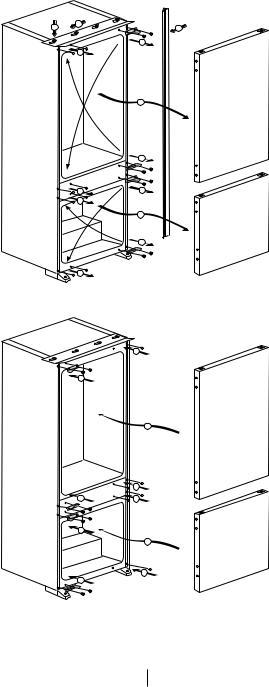
Reversing the doors
Proceed in numerical order
2 |
1 |
|
|
3 |
|
|
|
4 |
|
10 |
|
|
|
5 |
|
|
6 |
|
11 |
7 |
|
12 |
|
|
|
8 |
|
|
9 |
|
13 |
|

 17
17
16
15
|
18 |
14 |
22 |
21
20

 23
23
19
11 EN

4 Preparation
CYour refrigerator should be installed at least 30 cm away from heat sources such as hobs, ovens, central heater and stoves and at least 5 cm away from electrical ovens and should not be located under direct sunlight.
CThe ambient temperature of the room where you install your
refrigerator should at least be 10°C. Operating your refrigerator under cooler conditions than this is not recommended with regard to its efficiency.
CPlease make sure that the interior of your refrigerator is cleaned thoroughly.
CIf two refrigerators are to be installed side by side, there should be at least 2 cm distance between them.
CWhen you operate your refrigerator for the first time, please observe the following instructions during the initial six hours.
-The door should not be opened frequently.
-It must be operated empty without any food in it.
-Do not unplug your refrigerator. If a power failure occurs out of your control, please see the warnings in the “Recommended solutions for the problems” section.
COriginal packaging and foam materials should be kept for future transportations or moving.
12 EN

5 Using your refrigerator
Control Panel
|
|
|
|
|
|
|
|
|
|
|
|
|
|
|
|
|
|
|
|
|
|
|
|
|
|
|
|
|
|
|
|
|
|
|
|
|
|
|
|
|
|
|
|
|
|
|
|
|
|
|
|
|
|
|
|
|
|
|
|
|
|
|
|
|
|
|
|
|
|
|
|
|
|
|
|
|
|
|
|
|
|
|
|
|
|
|
|
|
|
1 |
2 |
3 |
|
4 |
5 |
6 |
|
7 |
|
|
|||||||
|
|
|
|
|
|
|
|
|
|
|
|
|
|
|
|
|
|
Switching on for the first time
To switch on the appliance be sure that the plug is inserted to the mains and the ON/OFF switch on the thermostat box is pushed.
(Fig.1-3)
Insert the plug in mains socket to switch on. The green light (5) will light on.
The freezer temperature is pre-set to -18°C but can be changed by the user. In addition, the fridge temperature is also adjusted.
Do not load with food immediately. The display shows fridge actual
temperature up to 19°C.
The display shows freezer actual temperature.
The appliance incorporates a protection device in the electronics, therefore the appliance may not start immediately – wait for about 6 minutes.
When it starts, you will then hear the compressor and refrigerant gas flows (You may also hear some cracking / popping sounds which is normal).
The set temperature will not be reached for approximately 8 hours and the display may fluctuate during this period. This is not a fault. When the correct storage temperatures have been reached (approximately 8 hours), you can start loading food.
When the fridge door is opened the interior light will come on.
The front edges of the cabinet are designed to avoid condensation and
may feel warm to the touch.
Temperature display & adjustment
Operating temperatures are controlled by the electronical thermostat knobs and may be set any position between
MIN and MAX (coldest position) a) Fridge
The display (7) shows average temperature in fridge compartment.
The fridge temperature will display from –5 to +19°C with respect to internal temperature.
The average temperature inside the fridge should be around +4°C (+41°F). b) Freezer
The display shows the actual average temperature in the freezer compartment.
13 EN

The set temperature will not be reached for approximately 8 hours and the display may fluctuate during this period. This is not a fault.
To display the currently set freezer temperature, turn the freezer knob (2). The new freezer set temperature will flash (3)
Freezer temperature will display from –30 to +30°C with respect to internal temperature.
The average temperature inside the freezer should be equal or colder than -18°C (0°F)
IMPORTANT: When you changed the freezer set temperature, with for approximately 8 hours to allow the freezer compartment to reach and maintain to new setting.
Door left alarm:
If the fridge door is left open for longer than 1 minute, an audible alarm will sound to alert you to close the door as soon as possible. To switch it off close the door.
High freezer temperature warning light
(RED) (6)
If the freezer temperature becomes too high, then the warning indicator light (6) will flash.
If the red indicator (6) remains on more than 12 hours, please contact with your service agency.
Don’t worry if the red indicator light comes on briefly. It could be due to warm food storage or warm air in the freezer compartment or if the freezer door has been left open for long periods.
Fast freeze function:
The fast freeze function enables you to load fresh food to be frozen.
When you press fast freeze button (1), the orange indicator light (4) will go on and the compressor will run for about 24 hours.
To cancel, press fast freeze button again and the orange light will go out.
Fast freeze will cancel itself automatically after 24 hours, if you do not cancel it manually.
The electronic control system incorporates a safety protection device so that if the fast freeze button
(1) is pressed more than once, the compressor will not come on. Wait for about 10 minutes and try again.
Self diagnostic:
Your appliance incorporates a selfdiagnostic system. Certain characters (E0, E1, etc.) will be displayed where the freezer temperature is usually shown. During this time red light (6) will flash. Please first see “trouble shooting” section and then “Service” section for further information.
High freezer temperature warning light (RED) (6)
If the freezer temperature becomes too high, then the warning indicator light (6) will flash.
If the red indicator (6) remains on more than 12 hours, please contact with your service agency.
Don’t worry if the red indicator light comes on briefly. It could be due to warm food storage or warm air in the freezer compartment or if the freezer door has been left open for long periods.
14 EN
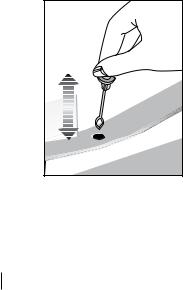
Fast freeze function:
The fast freeze function enables you to load fresh food to be frozen.
When you press fast freeze button (1), the orange indicator light (4) will go on and the compressor will run for about 24 hours.
To cancel, press fast freeze button again and the orange light will go out.
Fast freeze will cancel itself automatically after 24 hours, if you do not cancel it manually.
The electronic control system incorporates a safety protection device so that if the fast freeze button
(1) is pressed more than once, the compressor will not come on. Wait for about 10 minutes and try again.
Self diagnostic:
Your appliance incorporates a selfdiagnostic system. Certain characters (E0, E1, etc.) will be displayed where the freezer temperature is usually shown. During this time red light (6) will flash. Please first see “trouble shooting” section and then “Service” section for further information.
Defrost
A) Fridge compartment
Fridge compartment performs fullautomatic defrosting. Water drops and a frosting up to 7-8 mm can occur on the inner rear wall of the fridge compartment while your refrigerator cools down. Such formation is normal as a result of the cooling system. The frost formation is defrosted by performing automatic defrosting with certain intervals thanks to the automatic defrosting system of the rear wall. User is not required to scrape the frost or remove the water drops.
Water resulting from the defrosting passes from the water collection groove and flows into the evaporator through the drain pipe and evaporates here by itself.
Check regularly to see if the drain pipe is clogged or not and clear it with the stick in the hole when necessary.
Deep freezer compartment does not perform automatic defrosting in order to prevent decaying of the frozen food.
15 EN

B) Freezer compartment
Defrosting is very straightforward and without mess, thanks to a special defrost collection basin.
Defrost twice a year or when a frost layer of around 7 (1/4”) mm has formed. To start the defrosting procedure, switch off the appliance at the socket outlet and pull out the mains plug.
All food should be wrapped in several layers of newspaper and stored in a cool place (e.g. fridge or larder).
Containers of warm water may be placed carefully in the freezer to speed up the defrosting.
Do not use pointed or sharp-edged objects, such as knives or forks to remove the frost.
Never use hair dryers, electrical heaters or other such electrical appliances for defrosting.
Sponge out the defrost water collected in the bottom of the freezer compartment. After defrosting, dry the interior thoroughly.
Insert the plug into the wall socket and switch on the electricity supply.
Zero temperature compartment
This compartment has been designed to store frozen food which would be thawed slowly (meat, fish, chicken,etc.) as required.Zero temperature compartment is the coldest place of your refrigerator in which dairy products (cheese, butter), meat, fish or chicken may be kept at ideal storage conditions.
Vegetables and/or fruits must not be placed in this compartment.
16 EN

6 Maintenance and cleaning
A Never use gasoline, benzene or similar substances for cleaning purposes.
B We recommend that you unplug the appliance before cleaning.
B Never use any sharp abrasive instrument, soap, household cleaner, detergent and wax polish for cleaning.
CUse lukewarm water to clean the cabinet of your refrigerator and wipe it dry.
CUse a damp cloth wrung out in a solution of one teaspoon of
bicarbonate of soda to one pint of water to clean the interior and wipe it dry.
B Make sure that no water enters the lamp housing and other electrical items.
B If your refrigerator is not going to be used for a long period of time, unplug the power cable, remove all food, clean it and leave the door ajar.
CCheck door seals regularly to ensure they are clean and free from food particles.
A To remove door racks, remove all the contents and then simply push the door rack upwards from the base.
Protection of plastic surfaces
CDo not put the liquid oils or oil-cooked meals in your refrigerator in unsealed containers as they damage the plastic surfaces of your refrigerator. In case of spilling or smearing oil on the plastic surfaces, clean and rinse the relevant part of the surface at once with warm water.
17 EN

7 Recommended solutions for the problems
Please review this list before calling the service. It might save you time and money. This list includes frequent complaints that are not arising from defective workmanship or material usage. Some of the features described here may not exist in your product.
The refrigerator does not operate.
•Is the refrigerator properly plugged in? Insert the plug to the wall socket.
•Is the fuse of the socket which your refrigerator is connected to or the main fuse blown out? Check the fuse.
Condensation on the side wall of the fridge compartment (MULTIZONE, COOL CONTROL and FLEXI ZONE).
•Very cold ambient conditions. Frequent opening and closing of the door. Highly humid ambient conditions. Storage of food containing liquid in open containers.
Leaving the door ajar. Switching the thermostat to a colder degree.
•Decreasing the time the door left open or using it less frequently.
•Covering the food stored in open containers with a suitable material.
•Wipe the condensation using a dry cloth and check if it persists.
Compressor is not running
•Protective thermic of the compressor will blow out during sudden power failures or plug-out plug-ins as the refrigerant pressure in the cooling system of the refrigerator has not been balanced yet. Your refrigerator will start running approximately after 6 minutes. Please call the service if the refrigerator does not startup at the end of this period.
•The fridge is in defrost cycle. This is normal for a full-automatically defrosting refrigerator. Defrosting cycle occurs periodically.
•Your refrigerator is not plugged into the socket. Make sure that the plug is properly fit into the socket.
•Are the temperature adjustments correctly made?
•Power might be cut off.
18 EN

The fridge is running frequently or for a long time.
•Your new product may be wider than the previous one. This is quite normal. Large refrigerators operate for a longer period of time.
•The ambient room temperature may be high. This is quite normal.
•The refrigerator might have been plugged in recently or might have been loaded with food. Cooling down of the refrigerator completely may last for a couple of hours longer.
•Large amounts of hot food might have been put in the refrigerator recently. Hot food causes longer running of the refrigerator until they reach the safe storage temperature.
•Doors might have been opened frequently or left ajar for a long time. The warm air that has entered into the refrigerator causes the refrigerator to run for longer periods. Open the doors less frequently.
•Freezer or fridge compartment door might have been left ajar. Check if the doors are tightly closed.
•The refrigerator is adjusted to a very low temperature. Adjust the refrigerator temperature to a warmer degree and wait until the temperature is achieved.
•Door seal of the fridge or freezer may be soiled, worn out, broken or not properly seated. Clean or replace the seal. Damaged/broken seal causes the refrigerator to run for a longer period of time in order to maintain the current temperature.
Freezer temperature is very low while the fridge temperature is sufficient.
•The freezer temperature is adjusted to a very low temperature. Adjust the freezer temperature to a warmer degree and check.
Fridge temperature is very low while the freezer temperature is sufficient.
•The fridge temperature might have been adjusted to a very low temperature.
Adjust the fridge temperature to a warmer degree and check.
Food kept in the fridge compartment drawers are freezing.
•The fridge temperature might have been adjusted to a very low temperature.
Adjust the fridge temperature to a warmer degree and check.
19 EN

Temperature in the fridge or freezer is very high.
•The fridge temperature might have been adjusted to a very high degree.
Fridge adjustment has an effect on the temperature of the freezer. Change the temperature of the fridge or freezer until the fridge or freezer temperature reaches to a sufficient level.
•Doors might have been opened frequently or left ajar for a long time; open them less frequently.
•Door might have been left ajar; close the door completely.
•Large amount of hot food might have been put in the refrigerator recently. Wait until the fridge or freezer reaches the desired temperature.
•The refrigerator might have been plugged in recently. Cooling down of the refrigerator completely takes time.
The operation noise increases when the refrigerator is running.
•The operating performance of the refrigerator may change due to the changes in the ambient temperature. It is normal and not a fault.
Vibrations or noise.
•The floor is not even or it is weak. The refrigerator rocks when moved slowly.
Make sure that the floor is strong enough to carry the refrigerator, and level.
•The noise may be caused by the items put onto the refrigerator. Items on top of the refrigerator should be removed.
There are noises coming from the refrigerator like liquid spilling or spraying.
•Liquid and gas flows happen in accordance with the operating principles of your refrigerator. It is normal and not a fault.
There is a noise like wind blowing.
•Fans are used in order to cool the refrigerator. It is normal and not a fault.
Condensation on the inner walls of refrigerator.
•Hot and humid weather increases icing and condensation. It is normal and not a fault.
•Doors might have been left ajar; make sure that the doors are closed fully.
•Doors might have been opened frequently or left ajar for a long time; open them less frequently.
Humidity occurs on the outside of the refrigerator or between the doors.
•There might be humidity in the air; this is quite normal in humid weather. When the humidity is less, condensation will disappear.
20 EN

Bad odour inside the refrigerator.
•Inside of the refrigerator must be cleaned. Clean the inside of the refrigerator with a sponge, lukewarm water or carbonated water.
•Some containers or package materials might cause the smell. Use a different container or different brand packaging material.
The door is not closing.
•Food packages may prevent the door's closing. Replace the packages that are obstructing the door.
•The refrigerator is not completely upright on the floor and rocking when slightly moved. Adjust the elevation screws.
•The floor is not level or strong. Make sure that the floor is level and capable to carry the refrigerator.
Crispers are stuck.
•The food might be touching the ceiling of the drawer. Rearrange food in the drawer.

Bitte lesen Sie zuerst diese Anleitung!
Lieber Kunde,
Wir sind sicher, dass Ihnen dieses Produkt, das in modernsten Fertigungsstätten hergestellt und den strengsten Qualitätsprüfungen unterzogen wurde, lange Zeit gute Dienste leisten wird.
Wir empfehlen Ihnen, vor Inbetriebnahme des Gerätes das gesamte Handbuch durchzulesen und es anschließend aufzubewahren.
Diese Anleitung...
•hilft Ihnen, Ihr Gerät schnell und sicher zu bedienen.
•Lesen Sie die Anleitung, bevor Sie Ihr Gerät aufstellen und bedienen.
•Halten Sie sich an die Anweisungen, beachten Sie insbesondere die Sicherheitshinweise.
•Bewahren Sie die Anleitung an einem leicht zugänglichen Ort auf, damit Sie jederzeit darin nachschlagen können.
•Lesen Sie auch die weiteren Dokumente, die mit Ihrem Produkt geliefert wurden.
Bitte beachten Sie, dass diese Anleitung eventuell auch für andere Geräte eingesetzt werden kann.
Symbole und ihre Bedeutung
In dieser Anleitung finden Sie die folgenden Symbole:
C Wichtige Informationen oder nützliche Tipps.
AWarnung vor Verletzungen oder Sachschäden.
BWarnung vor elektrischem Strom.
Recycling
Dieses Produkt ist mit dem selektiven Entsorgungssymbol für elektrische und elektronische Altgeräte (WEEE) gekennzeichnet.
Das bedeutet, dass dieses Produkt gemäß der europäischen Direktive 2002/96/EC gehandhabt werden muss, um mit nur minimalen umweltspezifischen Auswirkungen recycelt oder zerlegt werden zu können. Weitere Informationen erhalten Sie von Ihren regionalen Behörden.
Elektronikprodukte, die nicht durch den selektiven Entsorgungsvorgang erfasst werden, stellen durch das Vorhandensein potenziell gefährlicher Substanzen umweltund gesundheitsrelevante Risiken dar.

INHALT
1 Ihr Kühlschrank |
3 |
2 Wichtige Hinweise zu Ihrer |
|
Sicherheit |
4 |
Bestimmungsgemäßer Gebrauch............. |
4 |
Bei Geräten mit Wasserspender:.............. |
6 |
Kinder – Sicherheit................................... |
6 |
HCA-Warnung.......................................... |
6 |
Tipps zum Energiesparen......................... |
7 |
4 |
Vorbereitung |
12 |
5 |
Nutzung des Kühlschranks 13 |
|
Bedienfeld ............................................. |
13 |
|
Abtauen................................................. |
15 |
|
0 °C-Fach.............................................. |
16 |
|
6 |
Wartung und Reinigung |
17 |
Schutz der Kunststoffflächen ................. |
17 |
|
3 Installation |
8 |
Was Sie bei einem weiteren Transport Ihres |
|
Kühlschranks beachten müssen............... |
8 |
Bevor Sie Ihren Kühlschrank einschalten. |
. 8 |
Verpackungsmaterialien entsorgen........... |
9 |
Altgeräte entsorgen.................................. |
9 |
Aufstellung und Installation....................... |
9 |
Austausch der Innenbeleuchtung .......... |
10 |
Türanschlag umkehren........................... |
11 |
7 Empfehlungen zur |
|
Problemlösung |
18 |
2 DE
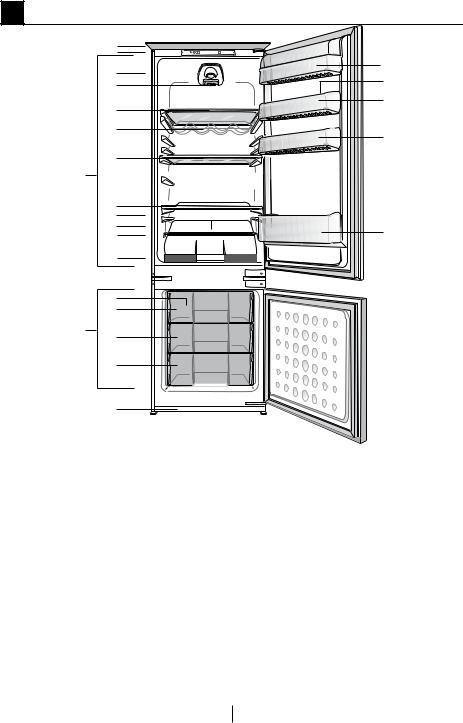
1 Ihr Kühlschrank
|
1 |
|
|
2 |
|
|
3 |
|
|
4 |
|
|
5 |
|
|
6 |
|
|
5 |
|
|
18 |
|
|
5 |
|
|
7 |
|
|
8 |
|
|
9 |
|
|
10 |
|
|
11 |
|
|
12 |
|
|
19 |
|
|
12 |
|
|
12 |
|
|
13 |
|
1. |
Kunststoff-Deckplatte |
11.Eiswürfelfach |
2. |
Bedienfeld |
12.Tiefkühlbereich |
3. |
Ein-/Ausschalter |
13.Lüftungsgitter |
4. |
Innenbeleuchtung |
14.Bereich für Milchprodukte |
5. |
Bewegliche Ablagen |
15.Einstellbare Türablagen |
6. |
Weinflaschenregal |
16.Eierbehälter |
7. |
Tauwassersammelkanal - Abflusskanal |
17.Flaschenablage |
8. |
Kunststoff-Rückwand |
18.Kühlbereich |
9. |
Gemüsefachabdeckung |
19.Tiefkühlbereich |
10.0 °C-Bereich
14
16
15
15
17
C Abbildungen und Angaben in dieser Anleitung sind schematisch und können etwas von Ihrem Produkt abweichen. Falls Teile nicht zum Lieferumfang des erworbenen
Produktes zählen, gelten sie für andere Modelle.
3 DE
